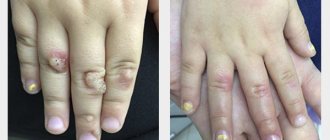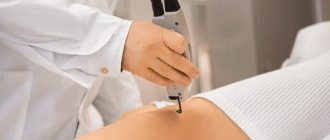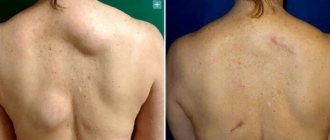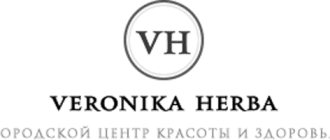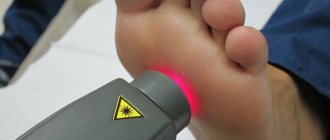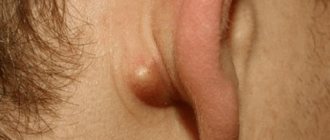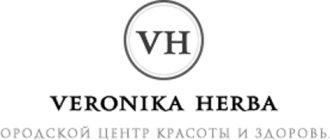Light methods have long been successfully used to treat acne - primarily due to the antibacterial effects of certain waves, but also due to the resurfacing effect. What types of lasers are optimal for solving this problem? What should you consider when working with them?
Elmira Baltacheeva, dermatovenerologist, cosmetologist.
Acne (acne) is a chronic recurrent disease of the pilosebaceous follicles. The accumulation of excess fat in the follicles, excessive keratinization of the fat ducts and their blockage lead to the proliferation of microbes in them, resulting in dysfunction of the skin sebaceous glands.
The disease affects 45–80% of people aged 12 to 30 years or more. Unlike other diseases that “get younger,” acne “gets older.” Quite often this problem occurs in men and often manifests itself in severe form. Acne usually lasts longer in women than in men because women's hormonal systems are more susceptible to fluctuations than men's. This explains why the course of acne in women is less stable and more chaotic. Today, 40% of adult women suffer from acne.
The peak of the disease occurs during puberty - 14–18 years, when hormonal changes occur in the body, its adaptation to a new level of hormones. With age, other factors affect the condition of the skin: decreased immunity, stress, diseases of the gastrointestinal tract, dysfunction of the endocrine glands, hereditary predisposition, illiterate use of cosmetics, contraceptives and much more. Recently, cases of exacerbation of acne after exposure to active sun have become more frequent: ultraviolet radiation stimulates the sebaceous glands and suppresses the skin's immune defense.
Progress of the procedure
Laser resurfacing of acne scars is performed in a clinic that has the appropriate certificates and qualified personnel. Initially, the skin on the face is cleansed with a mild gel, then treated with tonic. In case of excessive anxiety, it is possible to take light sedatives.
Since the procedure involves influencing the deep layers of the dermis, local anesthesia is administered before starting work. An anesthetic is applied to the injured area.
Laser resurfacing of acne is carried out using a special device. The essence of its work consists of several stages:
- The beam makes a microscopic hole in the skin.
- The dermis absorbs the laser, resulting in internal heating.
- When heated, moisture leaves the cells, which leads to their complete destruction.
- Tissue coagulation provokes the breakdown of old protein, elastin and collagen.
- Next, the beam destroys the connective tissue formed during the healing of previous inflammations.
- The surrounding cells activate intensive division.
It is this effect that allows you to even out the relief of the skin. One session can last from 15 to 30 minutes, depending on the scale of the problem and the sensitivity of the patient. At the end of the procedure, a soothing gel is applied to the treated area.
The effectiveness of laser removal of post-acne, back scars and other back skin defects
The most effective procedure for solving a number of processes of atrophic changes in the skin of the back is laser resurfacing.
The resurfacing process removes the superficial layer of the epidermis, affecting the deeper dermal layers. This leads to a decrease in the depth of post-acne scars, scars, and chickenpox marks.
The skin is designed in such a way that laser damage and heating of its surface causes activation of fibroblasts, which in turn triggers the processes of synthesis of collagen and elastin fibers, which are responsible for maintaining the normal condition of the skin.
After just one session, the patient sees a clear result and improvement in skin quality. The number of sessions for laser removal of stretch marks directly depends on their depth and “age”, and varies from 2-3 sessions to 5-8, with a break of 1.5-2 months.
The cost of laser resurfacing, based on the type.
View price
Types of laser radiation
To remove acne scars with laser, four types of equipment with different radiations are used:
- Neodymium laser – has a fractional effect. The pulses penetrate to a depth of 4-6 mm. Allows you to treat acne and eliminate the spread of microorganisms that cause acne formation. After the procedure, you don’t have to hide from the sun. Can be used to correct any area - face, neck, décolleté, back.
- Erbium laser is a representative of traditional grinding. Helps remove scars and tattoos. Doesn't heat cells. Penetrates into deep layers, not recommended for use during periods of active sun. The device has a targeted effect. After the session, swelling and redness of the treated area is observed.
- Fraxel - has a targeted effect on cells, heating them from the inside. The surface layer is not injured, which significantly reduces the rehabilitation period. After the procedure, metabolism accelerates and natural collagen production is stimulated. Used to eliminate post-acne, vascular network, stretch marks and age spots.
- Multilaser – combines several technologies. Able to remove post-acne and existing inflammatory foci. There are no consequences after the procedure.
The doctor chooses the appropriate type of laser.
Clinical results of scar treatment
Patient V., 46 years old.
Diagnosis: atrophic post-acne scars, enlarged pores, telangiectasias.
Clinical picture: multiple small atrophic scars on the cheeks, up to 2 mm in diameter, with rectangular edges and rounded edges. There are no new rashes.
Appointments. A combination treatment is recommended, combining laser peeling with a full and fractional beam.
Progress of the procedure. For pain relief, local anesthetic “Acryol” was applied (exposure 30 minutes).
Contour TRL (Micro Laser Peel) technology was used in combination with Profractional
1st stage. Planar laser peeling was used to smooth the level between the bottom of the scar tissue and the surrounding healthy skin. An Er:YAG 2940 nm laser (MicroLaserPeel) was used in planar processing mode.
Parameters: beam diameter 4 mm, depth 10 microns, fluence 2.5 J/cm2 (1 pass) and 15 microns (2 passes).
2nd stage. Fractional exposure using Er:YAG laser 2940 nm, Profractional.
Parameters: fractional handpiece with a microbeam diameter of 200 μm, fluence 50 J/cm2, with an overlap area of 22% without coagulation (1 pass). Rehabilitation – 8 days.
Result. After one procedure, a significant reduction in the severity of scars and narrowing of pores was achieved.
Patient K, 39 years old.
Diagnosis: atrophic post-acne scars.
Clinical picture: multiple large atrophic scars on the back, measuring up to 4-5 mm in diameter, with rounded edges. There are no new rashes.
Appointments. Full beam laser resurfacing is recommended.
Progress of the procedure. For pain relief, local anesthetic “Acryol” was applied (exposure 30 minutes). Planar laser peeling with removal of the “side” of the scar and treatment over the area without deepening its bottom.
MicroLaserPeel (Er:YAG 2940 nm)
Parameters: beam diameter 4 mm, fluence 2.5 J/cm2.
1 pass – 10 microdistrict
2 pass – 15 microns
3rd pass – 15 microdistrict
Rehabilitation – 12 days.
Result. After one procedure, a significant reduction in the severity of scars and narrowing of pores was achieved.
Patient M, 33 years old.
Diagnosis: post-inflammatory spots, hyperkeratosis, pigmentation.
Clinical picture: multiple stagnant post-acne spots, single atrophic scars, up to 0.5 mm in diameter. New rashes in the form of papulopustules periodically appear during menstruation.
Appointments. Planar laser peeling is recommended. Number of procedures - 2, with an interval of 1 month.
Progress of the procedure. For pain relief, local anesthetic “Acryol” was applied (exposure 20 minutes).
The laser used was Er:YAG 2940 nm, MicrolaserPeel (Sciton), beam diameter 4 mm, fluence 2.5 J/cm2.
2 passes of 10 microdistrict
Rehabilitation – 6 days.
Result. After one procedure, a significant reduction in hyperkeratosis, scarring and post-inflammatory spots was obtained
Hybrid laser HALO (Sciton Joule platform) with ablation and non-ablation technology
Ablation wavelength is 2940 nm. The 2940 nm wavelength targets the surface layer of the skin and is adjustable between (20-100 microns) to precisely evaporate tissue, improve skin texture and reduce enlarged pores.
Non-ablation wavelength is 1470 nm for coagulation. It affects the dermis, to a depth (200-700 microns), to correct deeper problems - photodamage, stimulation of neocollagenogenesis and correction of dermal hyperpigmentation.
The hybrid fractional laser produces ablation, followed by coagulation of the microscopic thermal zone.
Patient A., 49 years old.
Diagnosis: hyperkeratosis, atrophic post-acne scars.
Clinical picture: enlarged pores, hyperkeratosis, pigmentation, isolated small atrophic scars on the face, up to 1 mm in diameter, with rounded edges.
Appointments. A combination treatment combining planar laser and hybrid Halo (fractional ablation and non-ablation) is recommended.
Progress of the procedure. For pain relief, local anesthetic “Acryol” was applied (exposure 30 minutes).
1st stage. Planar laser peeling (Microlaserpeel) - 10 microns, 1 pass. In order to eliminate hyperkeratosis and narrow pores.
2nd stage. Hybrid Halo laser with wavelengths of 2940 and 1470 nm.
Parameters: (ablation (2940nm): 40µR-18%; non-ablation (1470nm) 325µR-15%)
Rehabilitation – 7 days.
Result. After one procedure, a significant narrowing of pores, smoothing of atrophic scars and significant elimination of pigmentation were obtained (photo).
Rehabilitation
The depth of treatment and the type of equipment used have a direct impact on the duration of recovery after laser resurfacing. Skin care is carried out at home independently.
Immediately after completion of the procedure, the cosmetologist applies a sterile bandage, which is removed only after three days. The skin is then treated with solutions and creams prescribed by the doctor. Up to 5 treatments are performed per day. As healing progresses, crusts and peeling may appear on the surface of the integument - they cannot be gotten rid of. If this is done, new scars will remain on the skin. Before each trip outside, you should use a cream with ultraviolet protection.
Acne phototherapy with laser LumenisM22 (Israel-USA)
During the acne phototherapy procedure, a filter in the blue spectrum (420 nm) is used. Blue light has a very pronounced bactericidal effect, i.e. destroys the main causative agent of acne - proprionobacteria. In addition, phototherapy can significantly reduce inflammation. As a result, the patient notes a decrease in the number of new rashes, drying and rapid healing of deep inflammatory and superficial pustular elements of the rash.
Phototherapy goes well with any procedures performed in the clinic.
The procedure is absolutely painless. The patient feels only a slight tingling sensation. Immediately after phototherapy you can go outside and no recovery period is required. Such sessions must be carried out once a week.
Effect of laser resurfacing post-acne
Reviews of laser treatment for post-acne prove the effectiveness of the procedure. After completing the course, the skin becomes elastic, with an even tone and structure. Existing age spots and scars disappear or become less noticeable. After 6 months, you can evaluate the final result, which will last for life.
Modern hardware cosmetology allows you to solve a number of problems. Laser treatment for post-acne is an effective way to get rid of skin defects, helps eliminate even the deepest scars and scars, and is considered the most comfortable and safe. The fairly high cost of the procedure is compensated by lasting results, excellent appearance and self-confidence. Large cosmetic centers regularly hold promotions, make discounts and give pleasant bonuses to their clients.
Post-acne
Many women and men suffer from post-acne marks. These are traumatic skin injuries, atrophic scars and irregularities formed below the level of healthy skin . They look like bumps, irregularities, pits, often colored in an unpleasant bluish, purple, or red color. Decorative cosmetics cannot cope with such damage, but they can make things worse. Various primers, powders, foundations clog the fat-excreting ducts and do not leave the skin any chance to recover on its own. The help of a qualified cosmetologist is needed. Post-acne marks are problems with the restoration of connective tissue after injury. Post-traumatic pigmentation is often added to them.
The problem can be solved with the help of hardware cosmetology . Laser fractional skin resurfacing is an excellent alternative to surgery. The AcuPulse laser can deal with more than just scars left after acne or chicken pox.
Has proven to be effective in
- treatment of wrinkles
- age spots
- loose skin
- spider veins
- freckles
- postoperative injuries and burns

